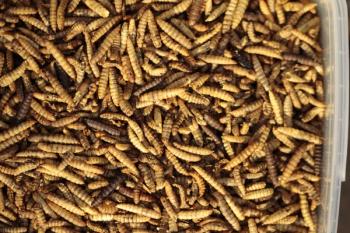
Nutritional compliance: It takes diligence, experts say
Our society is losing the war on obesity. And bad eating habits have spilled into the pet population. No matter how hard you preach, many clients don't seem to heed the warnings. In fact, client compliance with nutritional recommendations for therapeutic foods ranks at a dismal 12 percent compliance rate out of the the 59 percent of all dogs and cats that have visited a veterinarian and would benefit from treatment with a therapeutic diet, according to last year's American Animal Hospital Association's (AAHA) study. It was the worst compliance category. The survey estimates lost revenue in excess of $110,000 per veterinarian per year for therapeutic pet foods alone.
Our society is losing the war on obesity. And bad eating habits have spilled into the pet population. No matter how hard you preach, many clients don't seem to heed the warnings. In fact, client compliance with nutritional recommendations for therapeutic foods ranks at a dismal 12 percent compliance rate out of the the 59 percent of all dogs and cats that have visited a veterinarian and would benefit from treatment with a therapeutic diet, according to last year's American Animal Hospital Association's (AAHA) study. It was the worst compliance category. The survey estimates lost revenue in excess of $110,000 per veterinarian per year for therapeutic pet foods alone.
Link Welborn, DVM, dipl. ABVP and hospital director and owner of three Tampa veterinary hospitals says that nutritional counseling provides an ideal opportunity to talk about wellness issues with clients, and it works to improve compliance with a veterinarian's recommendations.
AAHA's compliance study was released under Welborn's presidency.
He says that improving client compliance is a vigilant effort undertaken by the entire hospital team, starting with the attending veterinarian.
Jane Armstrong, DVM, Dipl. ACVIM, MBA with the University of Minnesota's College of Veterinary Medicine, adds: "I see obesity as a very serious, but largely unrecognized, health threat in pets. I say unrecognized as many owners and veterinary professionals still fail to make the connection between obesity and the risk of developing specific diseases. Obesity is by far the most health risk for American pets today."
While there aren't many who would argue that point, Welborn says his practice approaches obesity first as a diagnosis and then outlines a treatment regimen. Setting up the nutritional talk as a formal diagnosis helps reinforce the necessity to comply with the impending health recommendations, he adds.
- Non-compliance
Armstrong explains: "Non-compliance with a veterinarian's recommendations occurs for a wide variety of reasons. The reasons for non-compliance with a therapeutic diet, such as 'giving in' to begging, are likely different than non-compliance with medication administration or vaccination recommendations.
"Compliance with weight loss programs is a huge problem in human medicine, and although not yet assessed quantitatively, is likely just as much of an issue for owners of obese pets," she says.
It is critically important to anticipate reasons for potential non-compliance when a weight loss program is started.
Weight loss programs should have three elements, Armstrong explains.
1. Owner commitment
2. Customized program (that includes both diet and exercise) for the patient and family.
3. Regular monitoring.
Because many members of the family may be involved in feeding, giving treats and/or exercise, it is important to ensure the entire family is committed to a weight reduction goal, she adds.
Welborn concurs. "Food is an important social ritual. And it is for pets, too."
- Extent of the problem
Armstrong, who will be presenting information on the topic this month at ACVIM's Forum, estimates that about 35 percent of adult dogs and cats seen by veterinarians in the United States are overweight or obese. The human statistics aren't as bad—21 percent of American adults are obese, meaning they have a Body Mass Index greater than or equal to 30.
Welborn says there are many social reasons for the problem, but one needs to recognize that pets have been taken out of their natural environments. "Our pets no longer have to work for their food, and they have a readily available supply. All of it is contributing to weight gain especially in their senior or geriatric years."
Armstrong adds that the health risks are many. "Overweight or obese dogs are prone to a number of diseases. These include musculoskeletal disorders such as hip dysplasia and cranial cruciate rupture, diabetes mellitus and cancer. They are also at increased risk for skin disease, urinary tract disease and oral cavity disease. Experimental investigations have show an association between hypertension and immune dysfunction."
Newsletter
From exam room tips to practice management insights, get trusted veterinary news delivered straight to your inbox—subscribe to dvm360.






